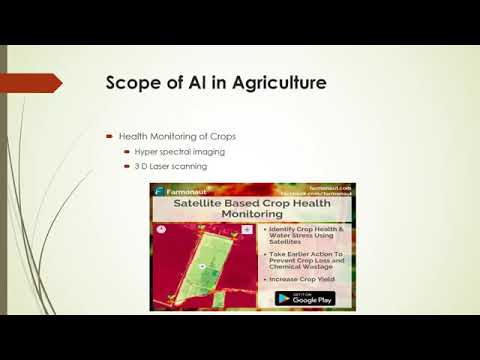Brood XIV Cicadas in Ohio: How to Prepare for the 2023 Emergence and Protect Your Trees
“Brood XIV cicadas in Ohio emerge after 17 years underground when soil temperatures reach 64 degrees Fahrenheit.”
As we approach the spring of 2023, Ohio residents are about to witness a remarkable natural spectacle – the emergence of Brood XIV periodical cicadas. This extraordinary event, occurring only once every 17 years, is set to captivate southwestern Ohio counties, including Ross, Pike, and Highland. In this comprehensive guide, we’ll explore everything you need to know about this fascinating phenomenon, from understanding the cicada life cycle to protecting your trees during the emergence.
Understanding the Periodical Cicada Emergence in Ohio
The periodical cicada emergence in Ohio is a unique event that has fascinated scientists and nature enthusiasts for generations. Unlike annual cicadas that appear each summer, these 17-year cicadas have been patiently waiting underground since 2006, preparing for their grand debut in 2023.
The Ohio Department of Natural Resources (ODNR) Division of Forestry has announced that residents should start seeing these distinctive insects by late May when soil temperatures reach approximately 64 degrees Fahrenheit (18 degrees Celsius). This temperature serves as a natural alarm clock, signaling to the cicadas that it’s time to emerge from their subterranean homes.

When Do Cicadas Come Out in Ohio?
The emergence of Brood XIV cicadas in Ohio is expected to begin in late May 2023. However, the exact timing can vary depending on local weather conditions and soil temperatures. Here’s what you need to know about the emergence timeline:
- Soil Temperature Trigger: Cicadas will begin to emerge when the soil temperature at a depth of 8 inches reaches 64°F (18°C).
- Emergence Duration: The emergence process typically lasts for several weeks, with peak activity occurring in early to mid-June.
- Time of Day: Cicadas usually emerge in the evening or early morning hours when temperatures are cooler.
To stay informed about the cicada emergence in your area, we recommend using resources like the Farmonaut Crop Plantation and Forest Advisory service. This innovative tool uses satellite data and AI to provide real-time information on environmental conditions, which can help you track soil temperatures and predict cicada emergence more accurately.
Ohio Cicada Counties: Where to Expect the Brood XIV Emergence
The 2023 emergence of Brood XIV cicadas will primarily affect southwestern Ohio counties. While some edge counties may experience fewer insects, central areas are expected to see a significant emergence. Here’s a list of counties where you can expect to witness this natural phenomenon:
- Ross County
- Pike County
- Highland County
- Jackson County
- Scioto County
- Clermont County
- Adams County
- Brown County
- Hamilton County
- Lawrence County
For those living in or near these counties, it’s essential to be prepared for the cicada emergence and understand how it might affect your local environment, particularly your trees and gardens.
The Fascinating Life Cycle of 17-Year Cicadas
The life cycle of periodical cicadas is one of nature’s most intriguing phenomena. Understanding this cycle can help us appreciate the significance of the 2023 emergence. Here’s a breakdown of the 17-year cicada life cycle:
- Egg Stage: Adult female cicadas lay eggs in small twigs and branches of trees.
- Nymph Stage: After 6-10 weeks, tiny nymphs hatch and fall to the ground, burrowing into the soil.
- Underground Development: Nymphs spend 17 years underground, feeding on tree root sap and slowly developing.
- Emergence: When soil temperatures reach 64°F, mature nymphs emerge from the ground.
- Adult Stage: Nymphs molt into adults, leaving behind their exoskeletons on trees and structures.
- Mating and Egg-laying: Adult cicadas mate, and females lay eggs, starting the cycle anew.
This extended underground period is what makes the emergence of Brood XIV cicadas such a rare and exciting event for Ohio residents.
Ecological Benefits of Cicadas
While the emergence of millions of cicadas might seem overwhelming, these insects play a crucial role in our ecosystem. Here are some of the ecological benefits of cicadas:
- Soil Aeration: As cicadas emerge, they create numerous small holes in the ground, which helps aerate the soil and improve its quality.
- Nutrient Cycling: When cicadas die, their bodies decompose, returning valuable nutrients to the soil and benefiting plant growth.
- Food Source: Cicadas serve as a protein-rich food source for various wildlife, including birds, mammals, and fish.
- Natural Pruning: Although cicadas can damage small branches when laying eggs, this natural pruning can stimulate new growth in trees.
Understanding these benefits can help us appreciate the role of cicadas in maintaining a healthy ecosystem. For those interested in sustainable agriculture practices that work in harmony with natural cycles, Farmonaut’s Carbon Footprinting service offers valuable insights into reducing environmental impact while maximizing ecological benefits.
How to Protect Trees from Cicadas
While cicadas are generally harmless to mature trees, they can pose a risk to young or newly planted trees. Here are some strategies to protect your trees during the cicada emergence:
- Net Protection: Cover small or newly planted trees with fine netting (1/4 inch mesh or smaller) to prevent cicadas from laying eggs in the branches.
- Delay New Plantings: If possible, wait until fall to plant new trees to avoid potential damage from egg-laying cicadas.
- Water and Mulch: Keep trees well-watered and mulched to reduce stress and promote health during the emergence period.
- Avoid Pesticides: The ODNR advises against using pesticides, as they can harm beneficial insects and are generally ineffective against large cicada populations.
For larger-scale tree management during the cicada emergence, consider using Farmonaut’s Large Scale Farm Management tools. These tools can help you monitor the health of your trees and orchards using satellite imagery, ensuring you can respond quickly to any potential issues.

Documenting the Cicada Emergence: Citizen Science in Action
“The Cicada Safari app allows Ohio citizens to contribute to research by documenting cicada sightings during the 2023 emergence.”
The Ohio Department of Natural Resources encourages citizens to participate in documenting this rare natural event. By using the Cicada Safari app, you can contribute valuable data to ongoing research efforts. Here’s how you can get involved:
- Download the Cicada Safari app on your smartphone.
- When you spot cicadas, take clear photos using the app.
- Submit your observations, including location data.
- Scientists will verify your submissions and use the data for research.
This citizen science initiative not only helps researchers but also allows you to actively engage with this fascinating natural phenomenon. It’s an excellent opportunity for nature enthusiasts, students, and families to learn about ecology and contribute to scientific knowledge.
Unique Characteristics of Brood XIV Cicadas
Brood XIV cicadas have several distinctive features that set them apart from other insects:
- Red Eyes: These cicadas are known for their striking bright red eyes.
- Black Bodies: Their bodies are primarily black, creating a stark contrast with their red eyes.
- Translucent Wings: The wings of Brood XIV cicadas are clear and veined, with a slight amber tint.
- Size: Adults are typically about 1.5 inches long.
- Distinctive Sound: Male cicadas produce a loud, buzzing mating call that can reach up to 100 decibels.
These unique characteristics make Brood XIV cicadas a fascinating subject for observation and photography. Remember to respect their habitats and avoid disturbing them unnecessarily during your observations.
The Impact of Cicadas on Agriculture and Horticulture
While cicadas can cause some damage to young trees, their overall impact on agriculture and horticulture is generally minimal. However, it’s essential for farmers and gardeners to be aware of potential effects:
- Egg-laying Damage: Female cicadas can damage small branches when laying eggs, potentially affecting fruit trees and ornamental plants.
- Root Feeding: During their 17-year underground phase, cicada nymphs feed on tree roots, but this rarely causes significant harm to mature trees.
- Beneficial Soil Impact: The emergence of cicadas can improve soil quality through aeration and nutrient cycling.
For agricultural professionals concerned about the potential impact of cicadas on their crops, Farmonaut’s Crop Loan and Insurance services can provide valuable protection and peace of mind. These services use satellite data to verify crop conditions, helping to streamline insurance claims if any cicada-related damage does occur.
Preparing for the Cicada Emergence: Tips for Homeowners
As the cicada emergence approaches, homeowners in affected areas can take several steps to prepare:
- Educate Family Members: Inform everyone in your household about the cicadas to prevent unnecessary alarm.
- Plan Outdoor Activities: Consider rescheduling major outdoor events during peak emergence periods.
- Protect Young Trees: Use netting to cover small or newly planted trees.
- Clean Up: Be prepared to rake up dead cicadas from your yard to prevent odor.
- Secure Outdoor Vents: Cover vents and outdoor equipment to prevent cicadas from entering.
By taking these precautions, you can minimize any inconvenience while still enjoying this rare natural event.
The Role of Technology in Monitoring Cicada Emergence
Modern technology plays a crucial role in tracking and understanding cicada emergences. Here are some ways technology is being used:
- Satellite Imagery: Satellites can detect changes in vegetation that may indicate cicada activity.
- Acoustic Monitoring: Specialized equipment can record and analyze cicada calls to estimate population sizes.
- Citizen Science Apps: Tools like the Cicada Safari app allow for widespread data collection.
- predictive Modeling: AI and machine learning algorithms can predict emergence patterns based on historical data and current conditions.
At Farmonaut, we’re at the forefront of using technology to monitor and manage agricultural ecosystems. Our Fleet Management tools can be particularly useful for agricultural operations looking to optimize their activities around the cicada emergence, ensuring efficient resource allocation and minimizing potential disruptions.
Frequently Asked Questions About Brood XIV Cicadas in Ohio
To address common concerns and curiosities about the upcoming cicada emergence, we’ve compiled a list of frequently asked questions:
- Q: Are cicadas dangerous to humans or pets?
A: No, cicadas are harmless to humans and pets. They don’t bite or sting. - Q: How long will the cicadas be around?
A: The adult cicadas typically live for 4-6 weeks after emerging. - Q: Can I eat cicadas?
A: While cicadas are edible and considered a delicacy in some cultures, it’s important to clean them thoroughly and be aware of any allergies. - Q: Will cicadas harm my garden?
A: Cicadas may cause minor damage to young trees but generally don’t harm mature trees or garden plants. - Q: How can I tell the difference between periodical and annual cicadas?
A: Periodical cicadas have red eyes and emerge in large numbers, while annual cicadas have dark eyes and emerge in smaller numbers each year.
Conclusion: Embracing the Wonder of Nature
The emergence of Brood XIV cicadas in Ohio is a remarkable event that offers a unique opportunity to witness one of nature’s most fascinating life cycles. While it may cause some temporary inconvenience, this phenomenon plays a vital role in our ecosystem and provides valuable insights into the rhythms of the natural world.
As we prepare for this extraordinary event, let’s approach it with curiosity, respect, and a sense of wonder. By understanding and appreciating the role of cicadas in our environment, we can turn this emergence into a memorable and educational experience for ourselves and future generations.
For those interested in leveraging technology to better understand and manage their agricultural operations during this unique time, Farmonaut offers a range of innovative solutions. From satellite-based crop monitoring to AI-driven advisory systems, our tools can help you navigate the challenges and opportunities presented by natural phenomena like the cicada emergence.
Remember, this event only occurs once every 17 years, so take the time to observe, learn, and marvel at the incredible workings of nature right in your own backyard.
Recommended Table: Brood XIV Cicada Emergence in Ohio Counties
| County | Expected Emergence Date | Estimated Population Density | Tree Protection Tips |
|---|---|---|---|
| Ross | Late May 2023 | High | Use fine netting on young trees, delay new plantings |
| Pike | Late May 2023 | High | Cover small trees, increase watering for stressed plants |
| Highland | Early June 2023 | Medium | Monitor tree health, use protective netting as needed |
| Jackson | Early June 2023 | Medium | Protect young fruit trees, avoid pesticide use |
| Scioto | Late May 2023 | High | Use tree wraps, focus on protecting ornamental trees |
As we conclude this comprehensive guide to the Brood XIV cicada emergence in Ohio, we encourage you to embrace this rare natural event with enthusiasm and curiosity. Whether you’re a farmer, gardener, or simply a nature lover, there’s something truly awe-inspiring about witnessing millions of cicadas emerge after 17 years underground.
For those looking to leverage cutting-edge technology in agriculture and environmental monitoring, Farmonaut offers a range of innovative solutions. Our satellite-based services and AI-driven tools can help you make informed decisions about crop management, resource allocation, and environmental impact.
Earn With Farmonaut: Affiliate Program
Earn 20% recurring commission with Farmonaut’s affiliate program by sharing your promo code and helping farmers save 10%. Onboard 10 Elite farmers monthly to earn a minimum of $148,000 annually—start now and grow your income!
Farmonaut Subscriptions
By combining the wonder of natural phenomena like the cicada emergence with the power of modern agricultural technology, we can create a more sustainable and productive future for farming. Join us at Farmonaut as we continue to innovate and support the agricultural community through these exciting times.




















